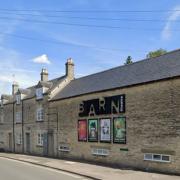Following a quest earlier this year by the Cotswolds Conservation Board to find the Seven Wonders of the Cotswolds, hundreds of public votes have been cast and the final seven have been named
The Seven Wondersof the Cotswolds named
Following a quest earlier this year by the Cotswolds Conservation Board to find the Seven Wonders of the Cotswolds, hundreds of public votes have been cast and the final seven have been named.
During the initial search to find the wonders of the Cotswolds Area of Outstanding Natural Beauty (AONB) over 80 nominations were received from members of the public. Historic sites and buildings, natural attractions, viewpoints, landscape and cultural features, towns and villages and many more ideas flooded in. With such a variety of suggestions that covered all aspects of the AONB, the Board invited the public to vote for their top seven Cotswolds ‘wonders’ to help determine the final list. Following a three-month voting period, the results announcing the final seven are:
Westonbirt, The National Arboretum
Located just outside the traditional Cotswold town of Tetbury, Westonbirt is an historic, Victorian picturesque landscape and an internationally important tree and shrub collection. Managed by the Forestry Commission, the National Arboretum is home to some 16,000 trees from across the world including Britain, China, North America, Japan and Chile. The Rollright Stones
The Rollright Stones are an ancient Neolithic and Bronze Age site located on the Oxfordshire/Warwickshire border. One of the most famous stone circles in England, the Rollright Stones are full of mysterious beauty and consist of three main elements, the Kings Men stone circle, the King Stone, and the Whispering Knights. Cotswold limestone The Jurassic oolitic limestone that lies beneath the Cotswolds is what gives the area its distinctive character. It is the limestone in all its various shades, used extensively in buildings, towns, villages and dry-stone walls throughout the AONB, that generates a feeling of unity between the natural and built environment. Woodchester Mansion and Park Woodchester Mansion is a Grade I listed 19th Century Victorian Gothic mansion mysteriously abandoned mid-construction in 1873. Hidden in a secluded Cotswold valley, the mansion and parkland have their own unique, timeless atmosphere. Cotswold Way National Trail
The Cotswold Way stretches 102 miles along the Cotswolds escarpment between the market town of Chipping Campden in the north to the City of Bath in the south. With panoramic views, picturesque villages and historic sites, the Cotswold Way attracts some 150,000 walkers every year. Cleeve Hill & Common
At 330 metres, Cleeve Hill and Common is the highest point of the Cotswolds. The site, designated as a Site of Special Scientific Interest, lies at the top of the Cotswold scarp and is important for its extensive area of limestone grassland, as well as its many geological and landscape features.
Stroud Farmers’ Market
Stroud Farmers' Market is multi-award winning and is well known as one of the biggest and most popular farmers market in the UK. Every Saturday the market attracts hundreds of visitors to sample the mouth-watering range of organic and local produce on offer from across the area.
Nicola Greaves, Information & Interpretation Officer at the Conservation Board says, “This has been a fascinating campaign which has captured the imagination of many people across the Cotswolds. The final list is a very interesting one which represents some of the Cotswolds' most distinctive features which we plan to use to create some new ‘wonder walks’ to help more people access and enjoy our beautiful Cotswolds landscape.”


























